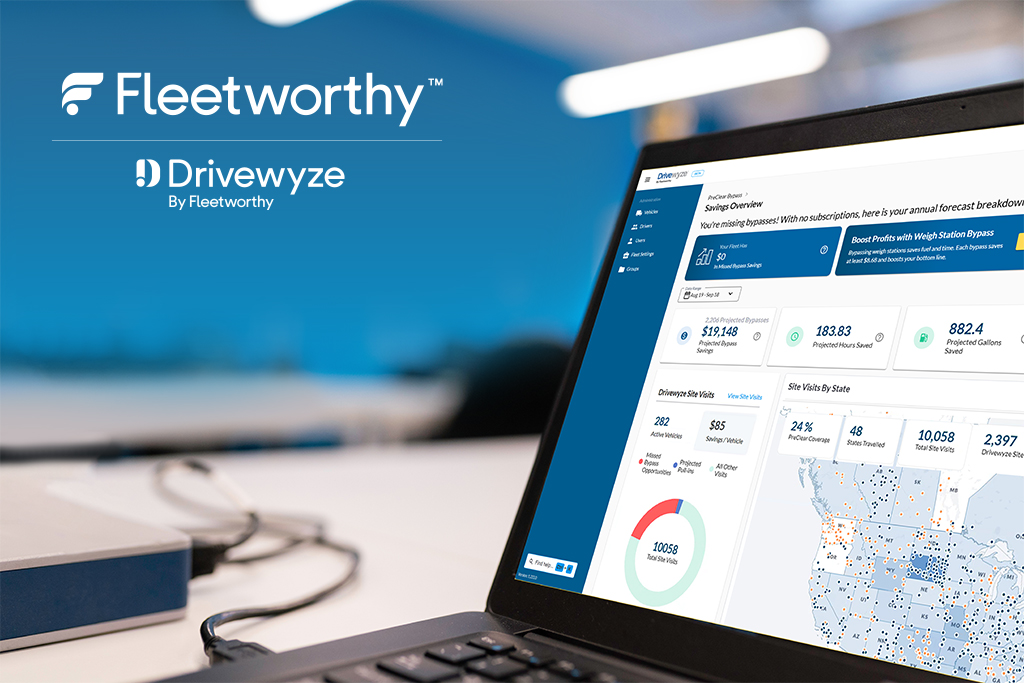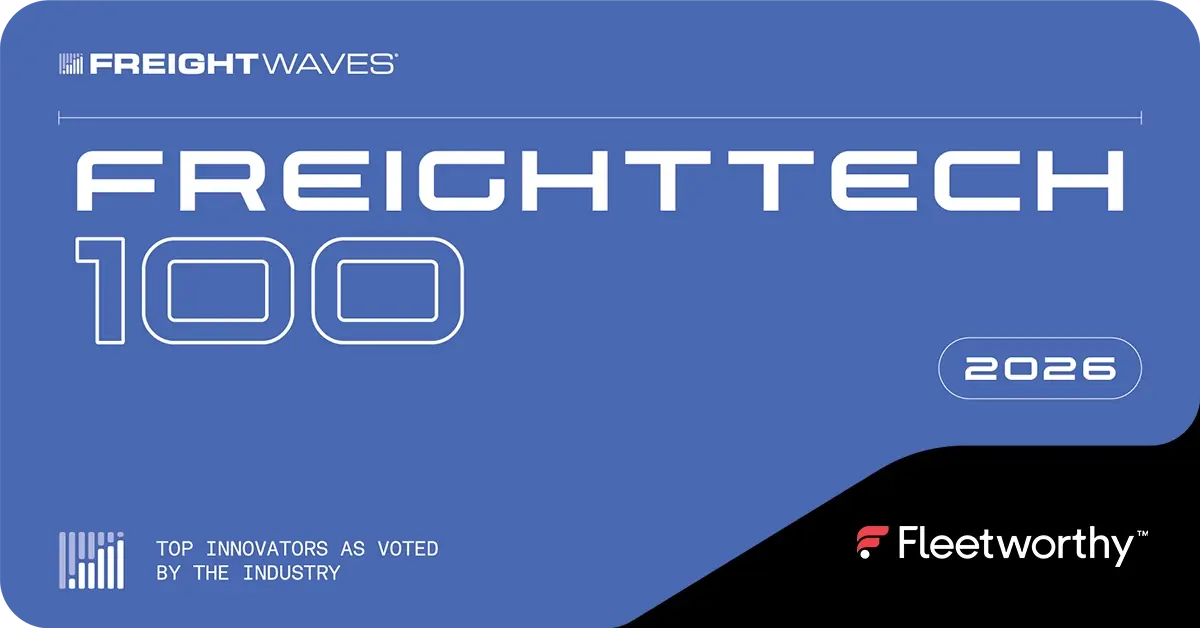The Department of Transportation (DOT) plays a vital role in regulating commercial vehicle operations to ensure safety on the nation’s roadways. Whether you’re an independent owner-operator or manage a large commercial fleet, understanding DOT certification for trucks is critical to staying compliant with federal and state transportation laws.
Why DOT Certification Matters
DOT certification isn’t just a bureaucratic requirement—it’s a key element in protecting drivers, businesses, and the public. It ensures that commercial motor vehicles (CMVs) meet specific safety standards before they hit the road and that both vehicles and drivers are operating within legal guidelines. Without proper certification, companies risk facing fines, vehicle out-of-service orders, higher insurance costs, and even revocation of operating authority.
Enhancing Fleet Safety and Accountability
DOT certification also serves as a baseline for safety practices. Certified vehicles are regularly inspected, properly maintained, and operated by qualified drivers who have passed medical and drug/alcohol screening requirements. This helps reduce the likelihood of accidents, mechanical failures, and legal liabilities.
From a broader perspective, maintaining DOT compliance contributes to a fleet’s Compliance, Safety, and Accountability (CSA) scores, which are publicly visible and closely monitored by regulators, insurers, and potential clients. A strong safety record can be a competitive advantage, while a poor one can damage a company’s reputation and bottom line.
This guide is designed to walk you through what DOT certification entails, who needs it, how to obtain it, and how to stay compliant over time. Whether you’re new to fleet operations or looking to tighten your compliance program, you’ll find the essential information needed to keep your trucks—and your business—roadworthy and regulation-ready.
What Is DOT Certification for Trucks?
DOT certification for trucks refers to the regulatory process established by the U.S. Department of Transportation (DOT) and enforced by the Federal Motor Carrier Safety Administration (FMCSA) to ensure that commercial vehicles, drivers, and motor carriers meet minimum safety and operational standards. The primary goal of this certification is to promote road safety, reduce accidents, and ensure that all commercial vehicles operating in the U.S. are properly maintained, legally registered, and operated by qualified personnel.
DOT certification is not a one-time event but rather a comprehensive compliance framework that covers multiple areas, including vehicle condition, driver qualifications, and company safety practices. It applies to any commercial motor vehicle (CMV) that meets specific criteria, such as weight thresholds, passenger capacity, or the transportation of hazardous materials.
Key Components of DOT Certification
To achieve and maintain DOT certification, fleet operators must ensure compliance across three core areas:
1. Vehicle Compliance
- All trucks must undergo annual DOT inspections to verify that critical safety components (brakes, lights, tires, etc.) are in good working condition.
- Vehicles must meet FMCSA maintenance standards and keep detailed service records.
- Trucks must display the appropriate USDOT number and company identification markings on both sides.
2. Driver Compliance
- Drivers must hold a valid Commercial Driver’s License (CDL) with any required endorsements (e.g., Hazmat, Tanker).
- All drivers must pass a DOT physical exam administered by a certified medical examiner to confirm they are medically fit to operate a CMV.
- Employers must maintain driver qualification files, including background checks, road tests, medical certifications, and ongoing performance evaluations.
- Participation in a drug and alcohol testing program is mandatory.
3. Company Compliance
- Motor carriers must register with the FMCSA and obtain a USDOT number; MC numbers are also required for interstate carriers.
- New entrants must pass a New Entrant Safety Audit within the first 18 months of operation.
- Companies must implement and monitor Hours of Service rules through logs or Electronic Logging Devices.
- Businesses must comply with insurance, recordkeeping, and safety performance requirements outlined by FMCSA.
By understanding these distinctions and the interconnected nature of DOT requirements, fleet operators can more effectively manage risk, pass audits, and avoid costly violations.
Who Needs DOT Certification?
DOT certification is not just for large trucking companies—any individual or business operating certain types of commercial vehicles on public roads may be subject to DOT oversight. Understanding whether your vehicle or operation requires DOT certification is essential for maintaining legal compliance and avoiding costly penalties.
Commercial Motor Vehicles (CMVs) Subject to DOT Oversight
The Federal Motor Carrier Safety Administration defines a Commercial Motor Vehicle (CMV) as any self-propelled or towed vehicle used on a highway in interstate commerce to transport passengers or property when the vehicle:
- Has a gross vehicle weight rating (GVWR) or gross combination weight rating (GCWR) of 10,001 pounds or more.
- Is designed to transport more than 8 passengers (including the driver) for compensation, or more than 15 passengers not for compensation.
- Is used in the transportation of hazardous materials in a quantity requiring placarding under HM regulations.
If your vehicle meets any of these criteria, you are subject to DOT regulations and must ensure the appropriate certification and compliance procedures are in place.
Gross Vehicle Weight Rating (GVWR) Thresholds
GVWR is a critical factor in determining DOT applicability. It refers to the maximum allowable total weight of a vehicle, including its own weight plus fuel, passengers, cargo, and trailer.
- GVWR ≥ 10,001 lbs – DOT regulations apply at the federal level for interstate operations.
- GVWR ≥ 26,001 lbs – May also trigger CDL requirements.
- Many states enforce DOT rules for intrastate carriers at or near the 10,001 lbs threshold as well.
It’s important for businesses to know both federal and state GVWR limits, as some states apply stricter rules for intrastate carriers.
Interstate vs. Intrastate Operations
- Interstate Carriers: Operate across state lines or transport goods that originate in or are destined for another state or country. These carriers are regulated by FMCSA and must register for a USDOT number and possibly an MC number (Motor Carrier authority).
- Intrastate Carriers: Operate solely within one state and are generally regulated by the state’s Department of Transportation. However, many states still require USDOT numbers and adherence to federal standards, especially when vehicle GVWR exceeds the 10,001 lbs threshold.
Key Point: Even if you don’t cross state lines, DOT regulations may still apply to your operations depending on your state’s laws and your vehicle’s classification.
Owner-Operators vs. Fleet Companies
- Owner-Operators: Individuals who operate their own CMV, either under their own authority or leased to a larger carrier. They must still comply with DOT certification requirements, including registration, inspections, medical exams, and logkeeping.
- Fleet Companies: Businesses managing multiple vehicles and drivers are subject to broader oversight. They are responsible for maintaining a DOT-compliant safety management program, covering everything from driver qualification files to preventative maintenance and electronic logging.
Whether you’re running a single truck or a fleet of hundreds, the same DOT standards apply. Larger fleets often require more robust compliance infrastructure but face similar scrutiny from regulators.
Specific Industries Affected
DOT certification affects a wide range of industries that rely on commercial transportation. Common sectors include:
- Logistics & Freight: Long-haul and regional carriers transporting goods over state lines.
- Construction: Heavy equipment haulers and dump trucks often exceed GVWR thresholds.
- Oil & Gas: Vehicles hauling hazardous materials or operating in remote areas.
- Moving & Storage: Trucks moving household or commercial goods across jurisdictions.
- Utilities & Telecom: Service vehicles and repair fleets operating under time-sensitive conditions.
- Passenger Transport: Charter buses, airport shuttles, and non-emergency medical transport services.
Even non-trucking companies that use CMVs for business purposes—such as landscaping firms, food distributors, or event companies—may fall under DOT rules if they meet the weight or function criteria.
If your operations involve a qualifying vehicle, hazardous materials, or cross state lines, you need to ensure DOT certification is in place. Identifying your classification early helps prevent compliance gaps and keeps your business operating smoothly and legally.
How to Get DOT Certification
Getting DOT certification for trucks involves more than just filling out a form—it’s a multi-step process that ensures your business, vehicles, and drivers are fully compliant with federal safety regulations. Below is a step-by-step guide to obtaining and maintaining DOT certification:
1. Determine If Your Vehicle or Company Needs Certification
Before starting the process, confirm whether your vehicle and operations require DOT certification. You’ll need certification if:
- Your vehicle has a GVWR or GCWR of 10,001 pounds or more,
- You transport hazardous materials requiring placarding,
- You carry 8+ passengers for compensation, or 15+ not for compensation,
- You operate interstate, or your cargo has interstate implications (even if you remain within one state).
Check both federal and state regulations, as some states require DOT compliance for intrastate carriers as well.
2. Register with the FMCSA
Once you’ve determined that DOT regulations apply to your operation, you must register with the Federal Motor Carrier Safety Administration through the Unified Registration System (URS). This is the gateway for obtaining operating authority.
To complete your FMCSA registration, you will need:
- Business and ownership details
- Vehicle information (types, weight classes)
- Type of operation (private, for-hire, exempt carrier, etc.)
- Cargo classification
- Insurance and BOC-3 process agent info (for for-hire carriers)
Tip: Have your EIN or SSN, and contact information ready. The process requires accuracy and attention to detail to avoid delays.
3. Obtain a USDOT Number
During FMCSA registration, you will receive a USDOT Number, which acts as your business’s unique identifier with federal regulators. This number must be:
- Displayed clearly on both sides of each commercial vehicle,
- Used in all filings, inspections, and roadside checks,
- Maintained and kept up to date in the FMCSA system.
Some operations may also need an MC Number (Motor Carrier Authority), particularly for-hire carriers operating across state lines.
4. Comply with Safety Audit Requirements (New Entrant Program)
All new DOT-registered companies are automatically enrolled in the New Entrant Safety Assurance Program. Within the first 12 months of operation, you will undergo a New Entrant Safety Audit, where FMCSA inspectors review your:
- Driver qualification files
- Vehicle maintenance records
- Hours of Service (HOS) documentation
- Drug and alcohol testing program
- Insurance coverage
- Accident register and safety policies
Failing this audit can lead to revocation of operating authority, so it’s critical to have your documentation in order from day one.
5. Schedule and Pass a DOT Vehicle Inspection
To maintain DOT compliance, each truck in your fleet must undergo a DOT Annual Inspection, as required under 49 CFR Part 396. This inspection must be performed by a qualified inspector, and includes checks on:
- Brakes
- Steering
- Tires and wheels
- Suspension
- Lights and reflectors
- Windshield wipers
- Exhaust system
Pro Tip: Many fleets integrate vehicle inspection tracking into telematics or fleet management software to ensure nothing is missed.
6. Maintain Compliance Documentation
DOT certification is not a one-time task—ongoing documentation is required to remain in good standing. This includes:
- Driver Qualification Files: CDL copies, MVRs, medical exams, road tests
- Hours of Service (HOS) logs or ELD records
- Maintenance Logs: Repairs, inspections, and preventative service
- Drug & Alcohol Program Records: Test results, policies, random selection logs
- Accident Records: Detailed documentation of any reportable incident
- Insurance and Licensing Updates
All records must be retained for specified periods, easily accessible for audits, and routinely reviewed for accuracy and completeness.
Ensure Your Fleet Stays DOT-certified & Fully Compliant
Fleetworthy’s comprehensive compliance solutions simplify complex DOT requirements with seamless digital record-keeping for vehicle inspections, proactive driver safety monitoring, efficient permitting, automated Form 2290 filings, and expert compliance consulting. Minimize operational downtime, mitigate risks, and avoid costly penalties by trusting Fleetworthy—your trusted partner for vehicle and driver safety compliance.




